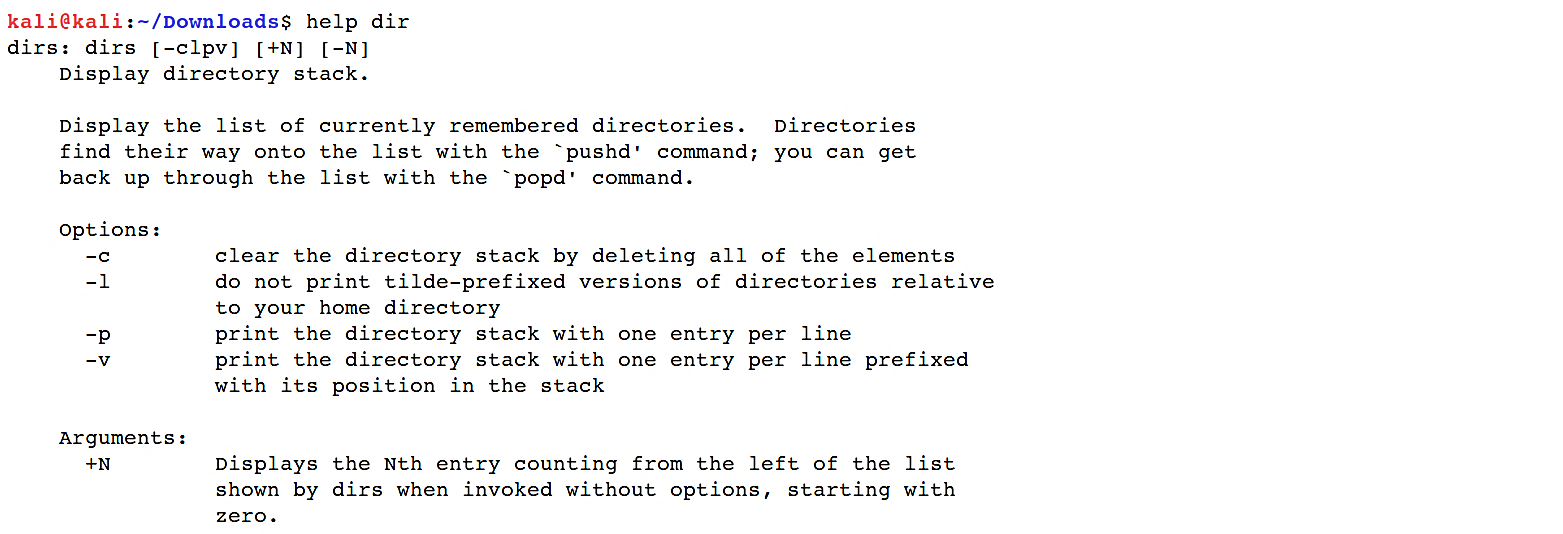Linux basics
Command-line interface (part 3)
Identifying commands
A command can be one of four distinct things:
1. An executable program like every one of those documents we saw. Inside this class, projects can be assembled binaries, for example, programs are written in C and C++, or projects sent in scripting dialects, the shell, Perl, python, ruby, and so forth.
2. A command incorporated with the shell itself. Bash supports various commands inside called shell built-ins. The “cd” option, for instance, is a shell built-in.
3. A shell function. These are smaller than standard shell contents added to the environment.
4. An alias, the commands that we can define ourselves, built from other commands.
It is frequently valuable to know precisely which of the four sorts of commands was utilized, and Linux gives a few different ways to discover it.
- “type”: This option is a shell built-in that shows the type of the specific given command name.
Ex: (kali@kali:~/Downloads$ type ls)

- “help”: Bash has built-in assistance accessible for every one of the shell built-ins. To utilize it, type “help” trailed by the name of the shell built-in.
Ex: (kali@kali:~/Downloads$ help dir)

Numerous executable projects bolster a “- -help” option that shows a description of the command’s upheld syntax and choices.
Ex: (kali@kali:~/Downloads$ ls – -help)

- “man”–manual page: Most executable programs planned for command-line use give a conventional bit of documentation called a manual page. Type “man” command, followed by the program name to view the manual page for that specific program.
Ex: (kali@kali:~/Downloads$ man ls)

- “info”–information: The GNU Project gives a choice to man pages for their projects, called “info.” Info pages are hyperlinked, much like website pages. The information program reads data documents, which are tree organized into individual nodes, each containing a single theme. Information records contain hyperlinks that can move you from node to node. A hyperlink can be recognized by its driving reference bullet and is initiated by setting the mouse cursor upon it and pressing the “Enter” key.
Ex: (kali@kali:~/Downloads$ info cat)
- “which”: Sometimes there is more than one form of an executable program introduced on a framework. While this isn’t extremely regular on workstations, it’s not surprising on large servers. Use the “which” operator to determine the exact location of a given executable.
Ex: (kali@kali:~/Downloads$ which ls)

- “alias”: The shell enables you to make aliases. Aliases are frequently used to create a simpler to recollect name for a current command or to supply parameters effectively.
Ex: (kali@kali:~/Downloads$ alias my_super_duper_calendar=cal)

To remove the alias you created, use the “unalias” command, and specify the alias name.
Ex: (kali@kali:~/Downloads$ unalias my_super_duper_calendar)

